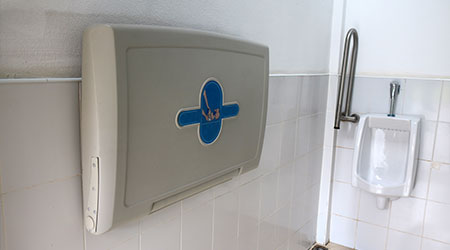
BIM: Facilities on Hold for Standard
January 23, 2018
Maintenance and engineering managers are always on the lookout for access to more information on the state of their institutional and commercial facilities. In recent years, a host of technology advances, from smartphones and tablets to the building Internet of Things, have combined to give managers and their staffs access to more information than ever on facilities, key systems and essential components.
But one technology advance that could deliver important maintenance and engineering data on new facilities remains remains a ways off, according to an article from Construction Dive. Building information modeling (BIM) has been creating project efficiencies from the moment designers began using its earliest renditions in the 1980s. Since then, the technology has been used in the design and construction of buildings, bridges and many other structures. There’s still plenty of room to grow. In fact, the BIM industry is expected to achieve a compound annual growth rate of 21.6 percent from 2016 to 2022 and earn $11.7 billion by the end of that period. But managers might have to wait a while longer for a U.S. BIM standard that would pave the way for its widespread use.
Read about the impact of BIM on maintenance
In addition to a large number of construction and design companies in the United States, firms around the world have embraced the technology as a way to achieve financial and time savings on construction projects and to share information using the same format. The United Kingdom, Russia and other European countries are in various stages of implementing BIM standards and mandates for those contractors that want to do business with their governments. U.K. firms have realized 15% to 20% construction cost savings from 2009 to 2015 by using BIM. For the United States, that kind of payoff could mean enough extra money to fix all the nation's structurally deficient bridges — with $175 billion to spare, writes Jim Lynch, vice president of Autodesk's construction products line, in The Hill, a political publication. In its most recent data release, the Bureau of Labor Statistics reported that the seasonally adjusted annual rate of public construction spending at the end of October 2018 was almost $292 million, so the implications are clear.
Read: Practical considerations of BIM in facilities
Experts believe BIM could save a significant amount of money if public agencies in the United States develop a common set of BIM standards and require construction companies and designers that want to do business with them to use it. Also, America leads in BIM technology use, says David Crane, vice president of government affairs and senior corporate counsel at Autodesk. “We've got the hardware and connectivity and tools like iPads,” he says. "It’s all U.S. products that can digitize the construction cycle.” But a U.S. BIM standard won't materialize, at least for the foreseeable future.
“There isn’t a prescribed structure for [a common set of government practices],” says Roger Grant, program director at the National Institute of Building Sciences (NIBS). “We don’t have one agency responsible for all construction like the U.K.”
This Quick Read was submitted by Dan Hounsell — dan.hounsell@tradepressmedia.com — editor-in-chief of Facility Maintenance Decisions
Next
Read next on FacilitiesNet












